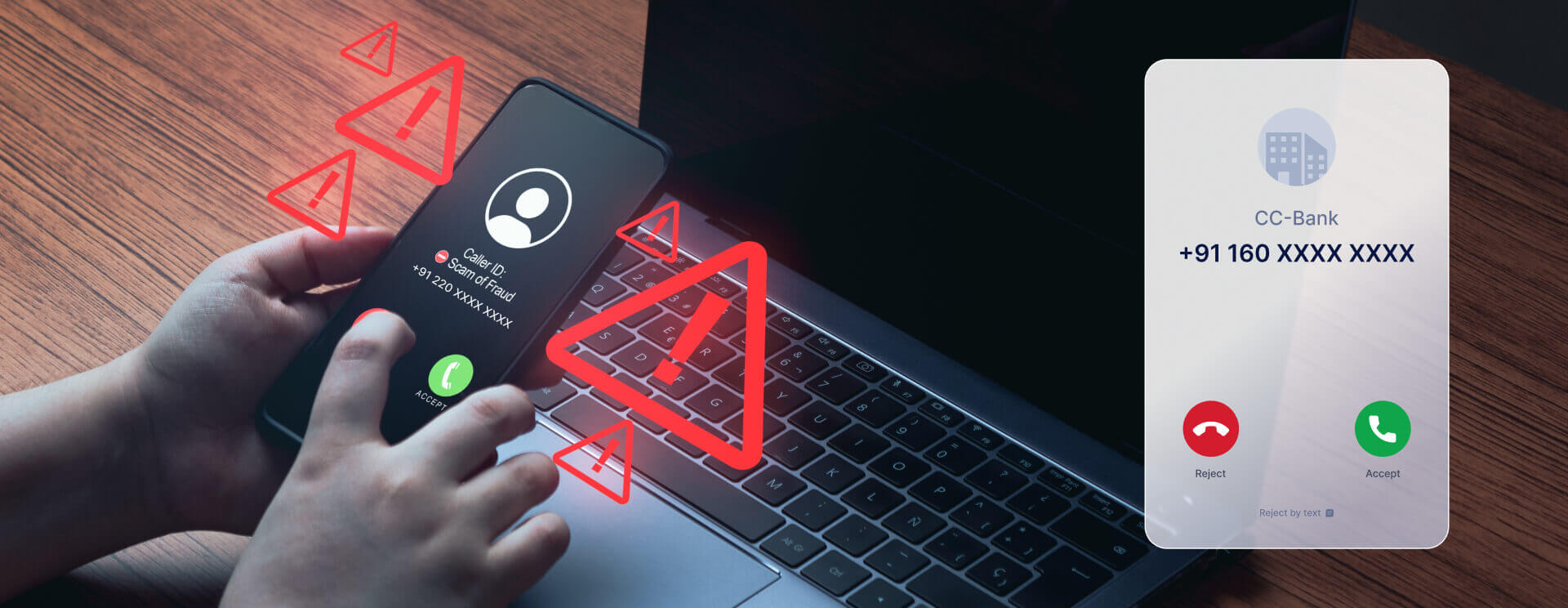TRAI’s recent update in the TCCCPR regulations proposed mandating financial entities to use the 160 number series for service and transactional calls. With this, they aim to curb Unsolicited Customer Communication (UCC) and protect the users from fraud.
Before this update, TRAI had mandated businesses to use numbers starting from 140 to make calls. But there wasn’t any distinction between telemarketing, transactional and service-related calling. With the introduction of the 160 series, there is a fresh framework to manage customer communication end-to-end.
These updates will have a significant impact on how you communicate with your customers. You might need to alter inbound and outbound workflows, adopt new practices and onboard communication partners.
Let’s understand the changes in TRAI guidelines in Mobile Number Portability and the 160 number series in detail.
What Are TRAI’s New UCC Guidelines?
The TCCCPR updates primarily aim to build a calling framework that ensures maximum privacy for the customers. Here are the key changes implemented:
- Digital Consent: Businesses must get explicit digital consent from their customers before sending any commercial messages. This applies to the Principal Entities (PEs)- the company that is sending the message or making the call, and Access Providers (APs)- internet or phone network providers. The APs are also responsible for creating a single Digital Consent Aquisition system to register and store customers’ consent data online.
- DLT Platform Registration: Telemarketers are required to register on the DLT platform before they start calling, ensuring that all calls are properly authorized and regulated.
- 140 Number Series: The “+91-140″ number series is assigned for promotional, transactional, and service calls. Businesses from all industries are mandated to use 140 numbers to make telemarketing calls. However, for transactional calling, the BFSI sector is an exception.
- 160 Number Series: The “+91-160″ number series is reserved for transactional, and service-related calling by the BFSI sector.
- Aggregator Collaboration: All businesses must partner with licensed aggregators to comply with the regulatory requirements.
Read this page “contact center solutions” here.
Where is the 160 Number Series?
The 160 series contains numbers starting with 1600 and 1601. Let’s understand the use of each number in detail:
1600 Series
1600 numbers are assigned to government entities and regulatory bodies for transactional and service-related calling. This means that the calls from central and state government agencies will use numbers formatted as 1600ABCXXX, where “AB” represents the telecom circle and “C” indicates the telecom service provider.
1601 Series
Numbers starting from 1601 reserved for financial institutions regulated by the Reserve Bank of India (RBI), Securities and Exchange Board of India (SEBI), Insurance Regulatory and Development Authority (IRDAI), and Pension Fund Regulatory and Development Authority (PFRDA). These calls will follow a similar format: 1601ABCXXX.
Read this page “business pbx systems” here.
How Does 160 Number Series Impact 140 Numbers?
With the new 160 numbers in place, here’s how the 140 series will be impacted:
Clarity of Purpose
The 160 series is supposed to only be used for service and transactional calls made by government entities and regulated financial institutions. Whereas the 140 series will remain dedicated mostly to promotional calling. Due to this distinction, your customers will no longer mistake your calls for telemarketing attempts.
Fraud Prevention
The 160 series will help prevent fraudsters from impersonating legitimate BFSI companies like yours by preventing the use of personal numbers or spoofing numbers from the 140 series.
Steppingstone For DLT Inclusion
TRAI is also discussing migrating the 140 series to the Distributed Ledger Technology (DLT) platform. This will help verify consent and further control spam calls originating from 10-digit numbers. This transition is part of broader efforts to enhance regulatory measures against unsolicited commercial communications (UCC) and improve customer protection.
Read this page “best voip systems” here.
160 Series and National Numbering Plan (NNP)
While the 160 number series is relatively new, it is important to remember that telecom sector in India is well-regulated. This means, there are multiple pre-existing laws that govern customer communication. One of the most important regulations frameworks is the National Numbering Plan (NNP).
NNP provides a set of guidelines for the allocation and of numbers to telephone services delivered over the public networks. The plan also describes the assignment of numbers to international services, trunk service, emergency services, and special services such as voice mail and Intelligent Network (IN) services.
The structure of the national number generally complies with the relevant International Telecommunication Union Standard Sector (ITU-T) Recommendations.
Complying with both regulatory requirements simultaneously might be challenging. Here’s how:
Limited Inventory
According to NNP, numbers are a limited resource.
The allocation guidelines set by the 160 series are at a Circle (State) level. This means that each telecom operator only has 1000 numbers per circle. Distributing these numbers among the customers will be challenging. To accommodate this, your telecom providers may need to establish a call volume-to-number ratio that works across the board.
This means that if your company has a centralized setup requiring less numbers, you may be able to fulfill your requirements easily. However, if you use third-party agencies, getting your hands on more numbers might be difficult.
Impact on Support
Until now, your phone number was one of the unique entities that your telecom service provider used to keep track of your company’s account. If there were multiple branches of your company in the state, each used to have a different number.
All the operational issues such as downtime, service assistance, or billing could be tracked using that number.
After the new regulations, multiple branches of your company might have to use the same number. Hence, your telecom operator might face significant difficulties in mapping your issues.
Read this blog here “Virtual Phone Number” here.
Routing Discrepancies
After the implementation of Unified License regulation for calling, telecom operators are required to hand over calls to each other either in the area where the call started (originating Legal Service Area, or LSA) or where it will end (terminating LSA).
For landline numbers, the number itself indicates where the call originated. However, for mobile numbers, telecom companies rely on a database from Mobile Number Portability (MNP) to know the number’s location.
Implementing the 160 series as a single number that works across locations would make it difficult for operators to figure out where to route calls, reconcile charges, and follow the national routing plans.
Until the telecom operators and TRAI establish clear guidelines for routing, you might face operational inefficiencies and cost-related issues when making calls.
How Can You Comply with the Regulations?
Now that you understand the details of the new TCCCPR regulations, here are a few steps you can take to implement them properly and avoid non-compliant communication:
- Review Your Calling Practices: Start by categorizing calls as transactional, service-related, and promotional (marketing-related). Check the type of calls that your customers have consented to receiving. Keep track of consent records.
- Don’t Spam: Communicate only with the customers who have provided explicit consent to receive calls and messages from your company. Use business phone number software to keep up the segregation between consenting and non-consenting numbers.
- Create Systems: Develop an online ecosystem to effectively manage customer consent and preferences. Focus on educating employees on call etiquette, compliance regulations, and customer satisfaction
- Implement TRAI Regulations: Use 140 numbers for telemarketing and 160 numbers for transactional calls. Refrain from making any unsolicited calls. Avoid mixing promotional/ upsell/ cross sell/ offer-related communication with transactional or service calls
Understanding the intricacies of the TCCCPR can be a bit daunting. However, partnering with a licensed aggregator like Acefone can help you make this process simple and ensure 100% compliance.














